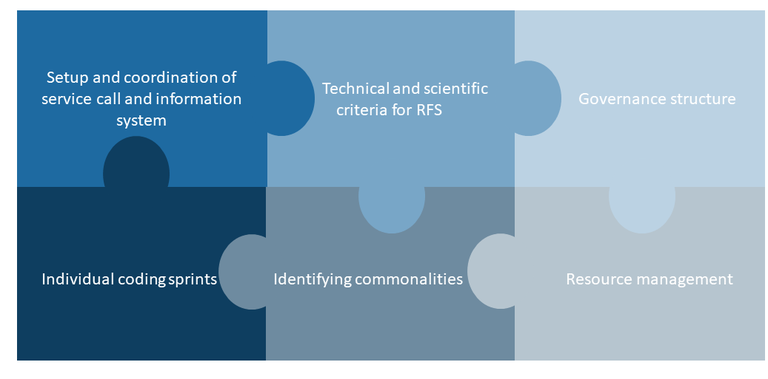The central goal of the natESM project is to provide a service to the national ESM community that will enable the individual components of simulation-based climate research in Germany to advance the use of future supercomputers and to use them efficiently. These efforts are supported by a steering committee and a support team.
| With Phase 2 now underway, we invite you to explore our strategic goals, key achievements, and planned next steps. |
The push toward establishing a national ESM strategy arose as a bottom-up initiative from the research community, in consultation with PT-DLR and organised by the German Climate Consortium (DKK).
DKRZ, as a national institute to support the German ESM community, is neutral towards individual scientific research at the ESM community’s institutions and offers its resources and services to all climate researchers. Partnering with the Jülich Supercomputing Centre (JSC) at Forschungszentrum Jülich will allow to make best use of current and upcoming HPC-systems in the (pre-) exascale era, by providing close vicinity to all HPC matters and reasonable involvement in the model development itself.
The project receives fundings from the Federal Ministry of Research, Technology and Space (BMFTR).
Our latest natESM newsletter can be downloaded here.
Explore our natESM strategy and delve into our vision, mission, technical criteria, and strategic direction that shape the future of Earth system modeling: Click here to access the paper.
If you want to receive information about upcoming events of the natESM community please send a mail to: info[at]nat-esm.de.
Aims and Scope
The establishment of a national ESM support team will help to save resources, awaken synergies, share insights, and disseminate knowledge.
- deliver direct HPC-support and consultancy to the ESM community,
- build up an expertise in the focus area: HPC, workflows, modularization/scalable coupling of components, scalable diagnostics,
- offer training programs for the ESM community to prepare codes independently in the home institutions
- finalize the national ESM strategy
The natESM-Project focuses on different topics, which address technical, structural and scientific aspects to be solved.

Guiding principles
|
1. Enabling |
- |
the motivation for gathering behind it is built by making life easier through the strategy. |
|
2. Sustainable |
- |
the required long-term stewardship of model (sub) systems can be secured only if the steward’s legitimate self-interest |
|
3. Verifiable |
- |
it must be possible to diagnose, after a reasonable time, whether the strategy has succeeded or failed. |
|
4. Pragmatic |
- |
whatever is agreed upon must be usable and efficient. Moreover, code options, while offering enhanced flexibility, can create substantial overhead especially when code must be ported to a new architecture, and can hence severely curtail efficiency. Sometimes clear choices must be made, to be re-assessed later. |
Criteria for an ESM system
Our ambition is to create a world-leading, multiscale, seamless Earth system modelling system, usable in research, operational applications, training, and education that one can see on a seperate page on our website.
The modelling system considers German expertise, does not exclude international components but avoids dependencies, and has a fit-for-purpose transparent governance structure.

